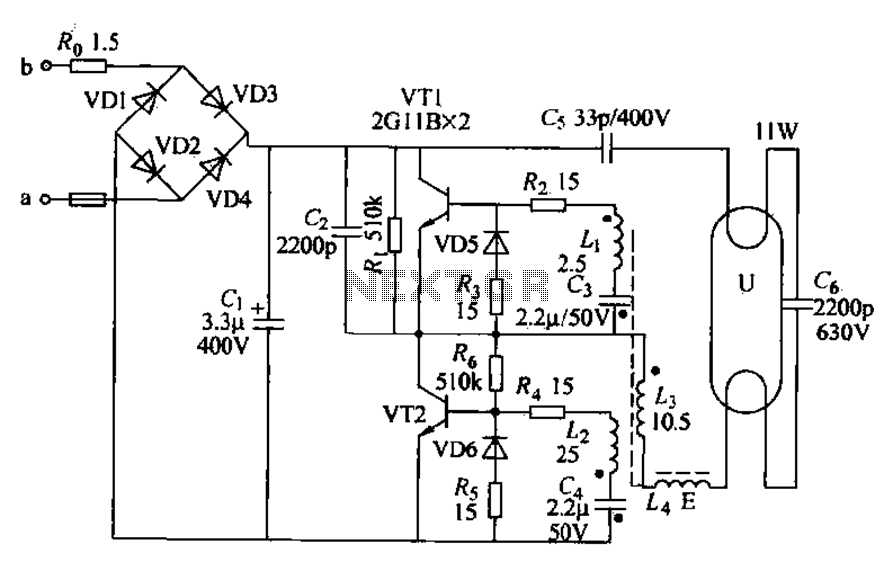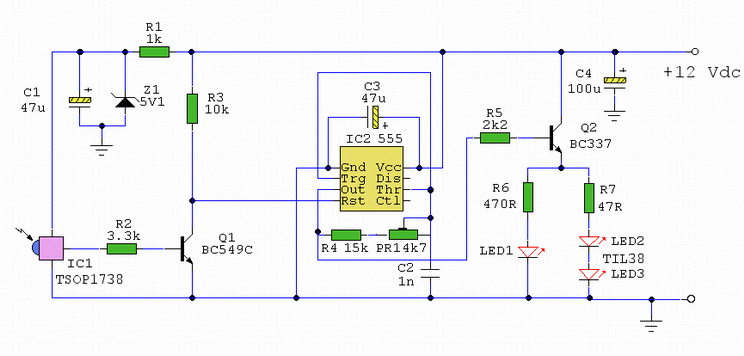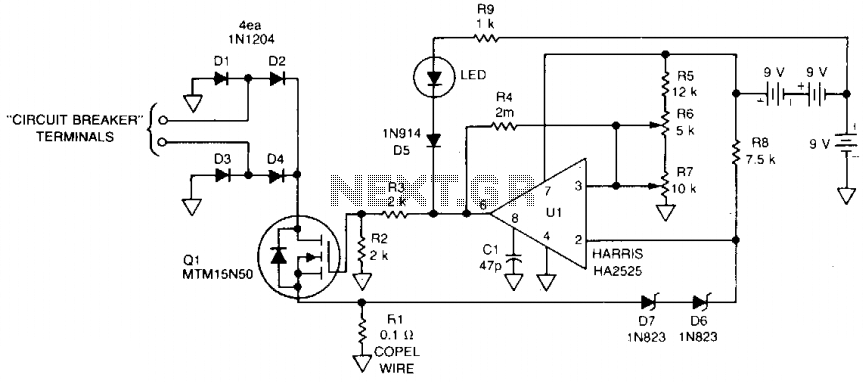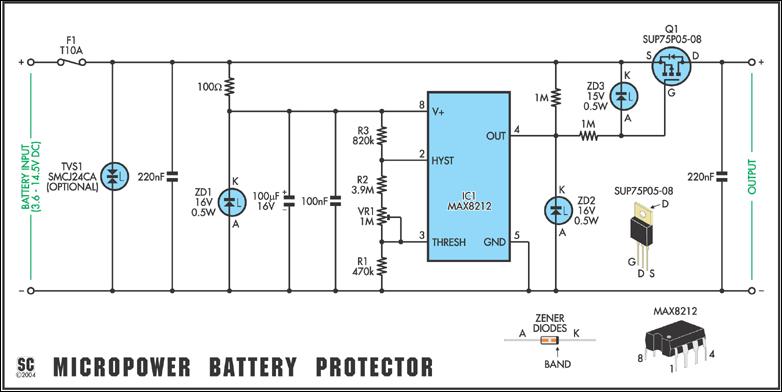
Suitable comparator circuit headset detection
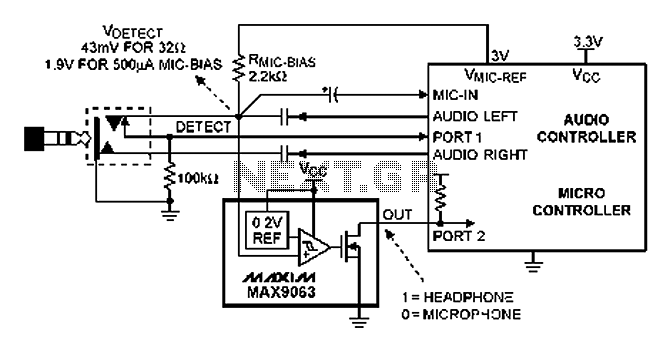
A headphone type detection circuit is illustrated in the attached figure. The 2.2k RMIC-BIAS resistor connected to the audio controller provides a low-noise reference voltage (VMIC-REF). When the audio jack is inserted, the VMIC-REF voltage through RMIC-BIAS is applied to the plug's equivalent resistance (not shown) on the ground, allowing the MAX9063 to measure the voltage VDETECT at the non-inverting input. For stereo headphones, the resistance is low (8, 16, or 32 ohms); for microphones, the current source varies due to the absorption of different fixed types of microphones, ranging from 100 µA to about 800 µA, leading to a higher resistance. The VDETECT voltage changes with the type of headphones inserted into the jack, enabling monitoring by a comparator to determine the headset type. Assuming the microcontroller reference voltage (VMIC-REF) is 3V, a 32-ohm headphone load produces a VDETECT voltage of 43mV, while a fixed current of 500 µA from a microphone load results in a voltage of 1.9V. It is important to note that direct connection of VDETECT to the microcontroller may pose challenges. The typical CMOS input logic level for microcontroller ports requires a voltage higher than 0.7 VCC and lower than 0.3 VCC; thus, for a 3.3V supply, the input logic level should exceed 2.3V but be less than 1V. The 1.9V level generated by the 500 µA microphone load does not meet the valid logic "1" requirement. The bias current for microphones ranging from 100 µA to 800 µA can produce VDETECT voltages between 2.78V and 1.24V. Any voltage drop below 2.3V does not satisfy the VIH (input high) requirements of the controller, assuming a bias resistor of 2.2k ohms. To achieve a higher voltage of 2.3V, the microphone bias current must be 318 µA or less, or the 2.2k bias resistor must be modified, which would alter the microphone detection threshold. The typical load of 32-ohm headphones can easily pull the level close to ground, resulting in a logic low of 1V or less, which is straightforward to implement. To detect the type of headset, VDETECT should be connected to one input of the comparator, with the reference voltage connected to the other input. The comparator output indicates the type of headset. This portable headset detection application is designed for small size and low power consumption. The comparator measures just 1mm x 1mm and has a maximum supply current of only 1 µA, providing strong anti-jamming capability against mobile phone frequencies and ensuring high reliability. Additionally, the comparator features internal hysteresis and low input bias current, making it an ideal choice for headset detection circuits in battery-powered devices such as mobile phones, portable media players, and laptops.
The circuit operates based on the principle of detecting the load impedance presented by the connected headphones or microphone. The RMIC-BIAS resistor plays a crucial role in establishing a stable reference voltage that is critical for accurate detection. When a headphone or microphone is connected, the change in load impedance alters the VDETECT voltage. The MAX9063 comparator is utilized for its precision in comparing the VDETECT against a set reference voltage, allowing for reliable identification of the connected device type. The comparator's design minimizes power consumption while maximizing performance, making it suitable for portable applications where battery life is a concern. The integration of hysteresis in the comparator enhances stability by preventing false triggering due to noise or voltage fluctuations. This is particularly important in mobile environments where the circuit may be subject to varying conditions. The overall design aims to provide an efficient and effective solution for headphone type detection in modern electronic devices.Headphone type detection circuit according to the figure attached. Figure, 2.2k RMIC-BIAS resistor connected to the audio controller provides a low noise reference voltage (VMIC-REF). When the audio jack is inserted, VMIC-REF voltage through RMIC-BIAS is applied to the plug - equivalent resistance (not shown) on the ground, so the MAX9063 in the noninverting input of a voltage VDETECT. For stereo headphones, the resistance is small (8, 16, or 32 ); for the microphone, the current source current because of the absorption of fixed types of different microphones in 100 A to about 800 A between floating and thus the resistance value is large.
Since VDETECT headphones into the jack with the type of change, it is possible to monitor VDETECT by a comparator to determine the type of headset. As shown, assume microcontroller reference voltage (VMIC-REF) is 3V, 32 headphone load produces VDETECT voltage of 43mV.
The fixed current 500 A microphone load, a voltage of 1.9V. Note that most applications will have problems VDETECT direct connection. Given the typical microcontroller port CMOS input logic level is higher than the requirements of 0.7 VCC and lower than 0.3 VCC, then 3.3V supply microcontroller input logic level should be higher than 2.3V, less than 1V. 1.9V level 500 A microphone load generated is not a valid logic "1" level. 100 A to 800 A microphone bias current will generate 2.78V to 1.24V for VDETECT, any voltage drops below 2.3V violates the controllers VIH (input high, assuming RBIAS to 2.2k ) requirements.
In order to obtain higher voltage or 2.3V, the microphone bias current must be 318 A or less. Otherwise we will have to change the 2.2k bias resistor, thereby changing the microphone detection threshold. Because of the typical load of 32 headphones can easily pull the level close to ground, thus generating a logic low of 1V or less easy to implement.
In order to detect the type of headset, you need to VDETECT connected to one input of the comparator, the reference voltage is connected to the other input. The comparator output, which represents the type of headset. This portable headset detect application should have a small size, and low power consumption. Shown comparator measuring just 1mm 1mm, maximum supply current of only 1 A. It has a strong mobile phone frequency anti-jamming capability, providing high reliability. The comparator also has internal hysteresis and low input bias current and other characteristics. These features make it to space, power consumption is extremely sensitive battery-powered products (such as: mobile phones, portable media players and laptops) an ideal choice for headset detection circuit.
The circuit operates based on the principle of detecting the load impedance presented by the connected headphones or microphone. The RMIC-BIAS resistor plays a crucial role in establishing a stable reference voltage that is critical for accurate detection. When a headphone or microphone is connected, the change in load impedance alters the VDETECT voltage. The MAX9063 comparator is utilized for its precision in comparing the VDETECT against a set reference voltage, allowing for reliable identification of the connected device type. The comparator's design minimizes power consumption while maximizing performance, making it suitable for portable applications where battery life is a concern. The integration of hysteresis in the comparator enhances stability by preventing false triggering due to noise or voltage fluctuations. This is particularly important in mobile environments where the circuit may be subject to varying conditions. The overall design aims to provide an efficient and effective solution for headphone type detection in modern electronic devices.Headphone type detection circuit according to the figure attached. Figure, 2.2k RMIC-BIAS resistor connected to the audio controller provides a low noise reference voltage (VMIC-REF). When the audio jack is inserted, VMIC-REF voltage through RMIC-BIAS is applied to the plug - equivalent resistance (not shown) on the ground, so the MAX9063 in the noninverting input of a voltage VDETECT. For stereo headphones, the resistance is small (8, 16, or 32 ); for the microphone, the current source current because of the absorption of fixed types of different microphones in 100 A to about 800 A between floating and thus the resistance value is large.
Since VDETECT headphones into the jack with the type of change, it is possible to monitor VDETECT by a comparator to determine the type of headset. As shown, assume microcontroller reference voltage (VMIC-REF) is 3V, 32 headphone load produces VDETECT voltage of 43mV.
The fixed current 500 A microphone load, a voltage of 1.9V. Note that most applications will have problems VDETECT direct connection. Given the typical microcontroller port CMOS input logic level is higher than the requirements of 0.7 VCC and lower than 0.3 VCC, then 3.3V supply microcontroller input logic level should be higher than 2.3V, less than 1V. 1.9V level 500 A microphone load generated is not a valid logic "1" level. 100 A to 800 A microphone bias current will generate 2.78V to 1.24V for VDETECT, any voltage drops below 2.3V violates the controllers VIH (input high, assuming RBIAS to 2.2k ) requirements.
In order to obtain higher voltage or 2.3V, the microphone bias current must be 318 A or less. Otherwise we will have to change the 2.2k bias resistor, thereby changing the microphone detection threshold. Because of the typical load of 32 headphones can easily pull the level close to ground, thus generating a logic low of 1V or less easy to implement.
In order to detect the type of headset, you need to VDETECT connected to one input of the comparator, the reference voltage is connected to the other input. The comparator output, which represents the type of headset. This portable headset detect application should have a small size, and low power consumption. Shown comparator measuring just 1mm 1mm, maximum supply current of only 1 A. It has a strong mobile phone frequency anti-jamming capability, providing high reliability. The comparator also has internal hysteresis and low input bias current and other characteristics. These features make it to space, power consumption is extremely sensitive battery-powered products (such as: mobile phones, portable media players and laptops) an ideal choice for headset detection circuit.
